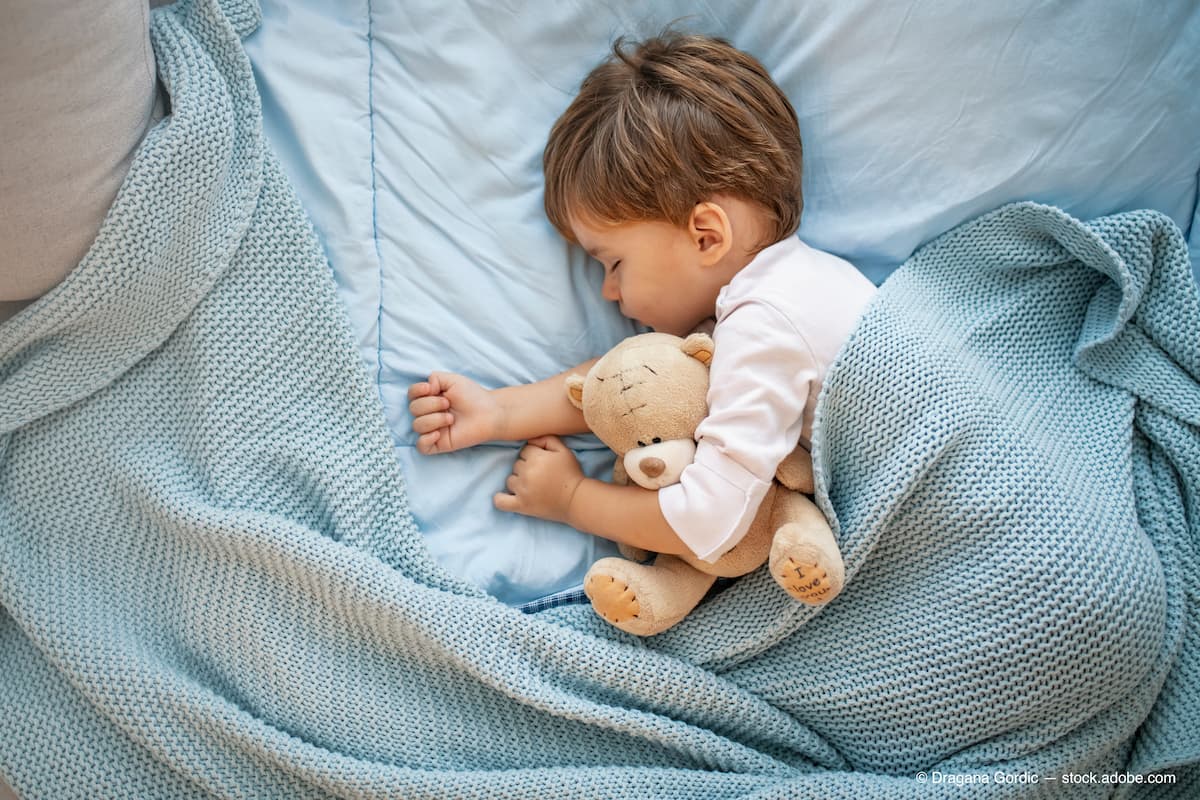New and emerging myopia management: The impact of sleep
New research suggests sleep is an additional risk factor affecting myopia onset and progression.
Adequate sleep—both quantity and quality—plays an essential role in many aspects of a child’s overall well-being including cognition, academic performance, emotional health, mental health, and physical health. (Dragana Gordic / Adobe Stock)

The exact reason why an individual becomes myopic and what determines their rate of progression is still a complex, multi-factorial puzzle. However, over the years, researchers have unlocked some key contributors such as genetics, lack of outdoor time, and increased near work. More recently, the impact of sleep has been suggested as an additional behavioral risk factor affecting both myopia onset and progression.
Adequate sleep—both quantity and quality—plays an essential role in many aspects of a child’s overall well-being including cognition, academic performance, emotional health, mental health, and physical health.1 According to the American Academy of Pediatrics, 25% of children under the age of 5 do not get enough sleep. This is especially concerning, as children of this age are most prone to the development of myopia. Many studies have confirmed myopic children—compared to non-myopic children—tend to have worse sleep habits, including inconsistent bedtimes, later bedtimes, and poor sleep quality.2-6 Although there are still many unanswered questions and possible confounding factors, we now have more insights we can offer to interested and motivated parents.
How much sleep is recommended?
According to 2 recent studies, there is an increased risk of myopia in children who sleep less than 5 to 7 hours per night compared to those who sleep more than 9 hours per night.2-3 In general, younger children tend to naturally get at least 9 hours of sleep per night, but this recommendation can be especially helpful for adolescents who oftentimes sacrifice sleep for other aspects of their lives such as homework, device use, and sports.
What is an appropriate bedtime?
Results from a trial in China found that children who had a bedtime of 9:30 pm or later were much more likely to be myopic at baseline, to develop myopia during the two year trial, and to have more significant myopic progression.6 Altering a child’s bedtime will likely require altering the entire family’s evening routine and schedule, but the child will not only receive the positive impact on their refractive error but will likely improve their quality of life, as well.
Should screen time be avoided prior to bedtime?
Appropriate regulation of the sleep/wake cycle is critical for normal eye growth and thus, regular disruptions of this cycle could impact an individual’s refractive error. Exposure to bright light from a digital device prior to bedtime disrupts the circadian rhythm, causing melatonin suppression and disturbance of normal sleep onset and duration.7 A general recommendation is to discontinue device usage at least 1 hour prior to bedtime in addition to limiting device time throughout the day as much as possible.
Proper sleep hygiene is a crucial component of not only a child’s general health but potentially their eye health as well. Thankfully, sleep is a modifiable risk factor for myopia and simple changes to a child’s nightly routine can positively impact their final visual outcome.
References
Matricciani L, Paquet C, Galland B, Short M, Olds T. Children's sleep and health: A meta-review. Sleep Med Rev. 2019;46:136-150. doi:10.1016/j.smrv.2019.04.011
Jee D, Morgan IG, Kim EC. Inverse relationship between sleep duration and myopia. Acta Ophthalmol. 2016;94(3):e204-e210. doi:10.1111/aos.12776
Gong, Y. , Zhang, X. , Tian, D. , Wang, D. and Xiao, G. (2014) Parental myopia, near work, hours of sleep and myopia in Chinese children. Health, 6, 64-70. doi: 10.4236/health.2014.61010.
Ostrin LA, Read SA, Vincent SJ, Collins MJ. Sleep in Myopic and Non-Myopic Children. Transl Vis Sci Technol. 2020;9(9):22. Published 2020 Aug 12. doi:10.1167/tvst.9.9.22
Ayaki M, Torii H, Tsubota K, Negishi K. Decreased sleep quality in high myopia children. Sci Rep. 2016;6:33902. Published 2016 Sep 21. doi:10.1038/srep33902
Liu XN, Naduvilath TJ, Wang J, et al. Sleeping late is a risk factor for myopia development amongst school-aged children in China [published correction appears in Sci Rep. 2021 Feb 23;11(1):4881]. Sci Rep. 2020;10(1):17194. Published 2020 Oct 14. doi:10.1038/s41598-020-74348-7
Nickla DL, Totonelly K. Brief light exposure at night disrupts the circadian rhythms in eye growth and choroidal thickness in chicks. Exp Eye Res. 2016;146:189-195. doi:10.1016/j.exer.2016.03.003
Newsletter
Want more insights like this? Subscribe to Optometry Times and get clinical pearls and practice tips delivered straight to your inbox.